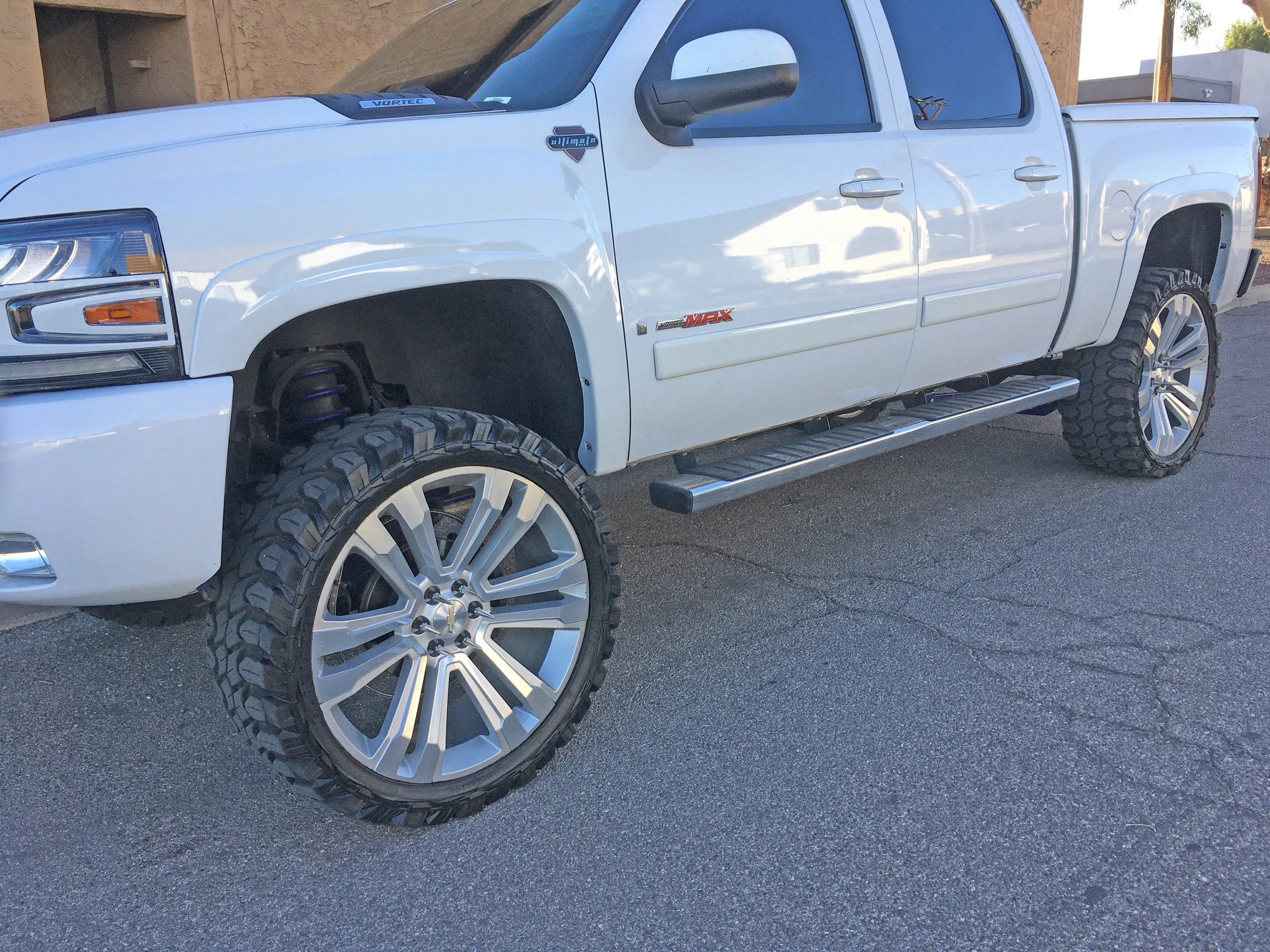Save the tall sidewalls!
Take a look at the tires on this truck. I did not stop to see what size they were, as I was afraid the owner would appear and I’d have to pretend I was admiring the thing. And my iPhone snapshot won’t blow up enough to read the sidewalls. The wheels were certainly 22s at minimum. The aspect ratio on the tires couldn’t have been more than 30 or 40.
I don’t know why a tire manufacturer would bother making an aggressive mud-terrain tire with a sidewall no more than two inches tall. (Well, I guess I do know—they sell.) But the combination not only makes no sense, it’s hugely detrimental to even poseur street-only driving. These tires will be loud, they’ll ride poorly, they’ll reduce fuel economy, they’ll have poor lateral grip, and they’ll increase the potential for wheel damage, both curb rash and possible failure if the driver hits a curb or other obstacle. (I won’t mention the silly spiked lug nuts except to offer an exaggerated eye roll.) If this fellow actually tried to tackle the backcountry with these tires he’d risk severe tire and wheel damage, and would be unable to air down at all to increase traction or flotation.
This Chevy is obviously riding on aftermarket wheels. Sadly, however, factory wheel diameters are on the way up too, even on vehicles advertised for their off-road capability. Seventeen-inch-diameter wheels are now on the small side; 18s, 19s, and 20s are more and more common. The new Land Rover Defender has no wheel option under 18 inches, even with the steel wheels on the base model. The smallest wheels available on the new Bronco are 17s, as on the Wrangler Rubicon.
Why is this important? A taller sidewall conveys numerous advantages once you leave the pavement. Tires with an aspect ratio of 75 to 85—that is, with a sidewall 75 to 85 percent as tall as the tread is wide—can be effectively aired down, providing more grip on loose surfaces and rocks, and lengthening the contact patch to increase flotation in soft sand. The tall sidewall protects the wheel rim from impacts, and enhances ride quality. Should you lose a bead in the backcountry, or need to dismount the tire to repair a punctured or torn sidewall from the inside, a high-aspect-ratio tire is far, far easier to reseat in the field with a portable air pump.
Of course, you can still have a tall aspect ratio on a larger-diameter wheel if it’s also a larger-diameter tire, such as on some full-size American trucks. The Ford Tremor comes with 18-inch wheels, but the tires are 35 inches tall and have a decent aspect ratio of 75. You’d have a difficult time fitting 35-inch tall, 75-aspect-ratio tires on the Defender’s 18-inch wheels.
The corollary to increasing wheel diameters is, maddeningly, a reduction in the choice of 75 to 85 aspect tires for 16-inch wheels—for decades the preferred wheel diameter for serious remote travel. Nevertheless, there are still plenty available, especially from the makers who recognize the value of the size.
If you’re shopping for a new truck in which you plan to travel extensively off-pavement, look through the option list carefully and choose the smallest-diameter wheel that is available with the other options you want. Unfortunately, the more highly optioned the vehicle, the more certain it will also be saddled with large-diameter wheels. It’s worth checking to see if smaller aftermarket wheels will fit if you’re stuck buying your dream vehicle with fancy 20 or 21-inch factory alloys. The limiting factor is likely to be the diameter of brake disc and caliper.

